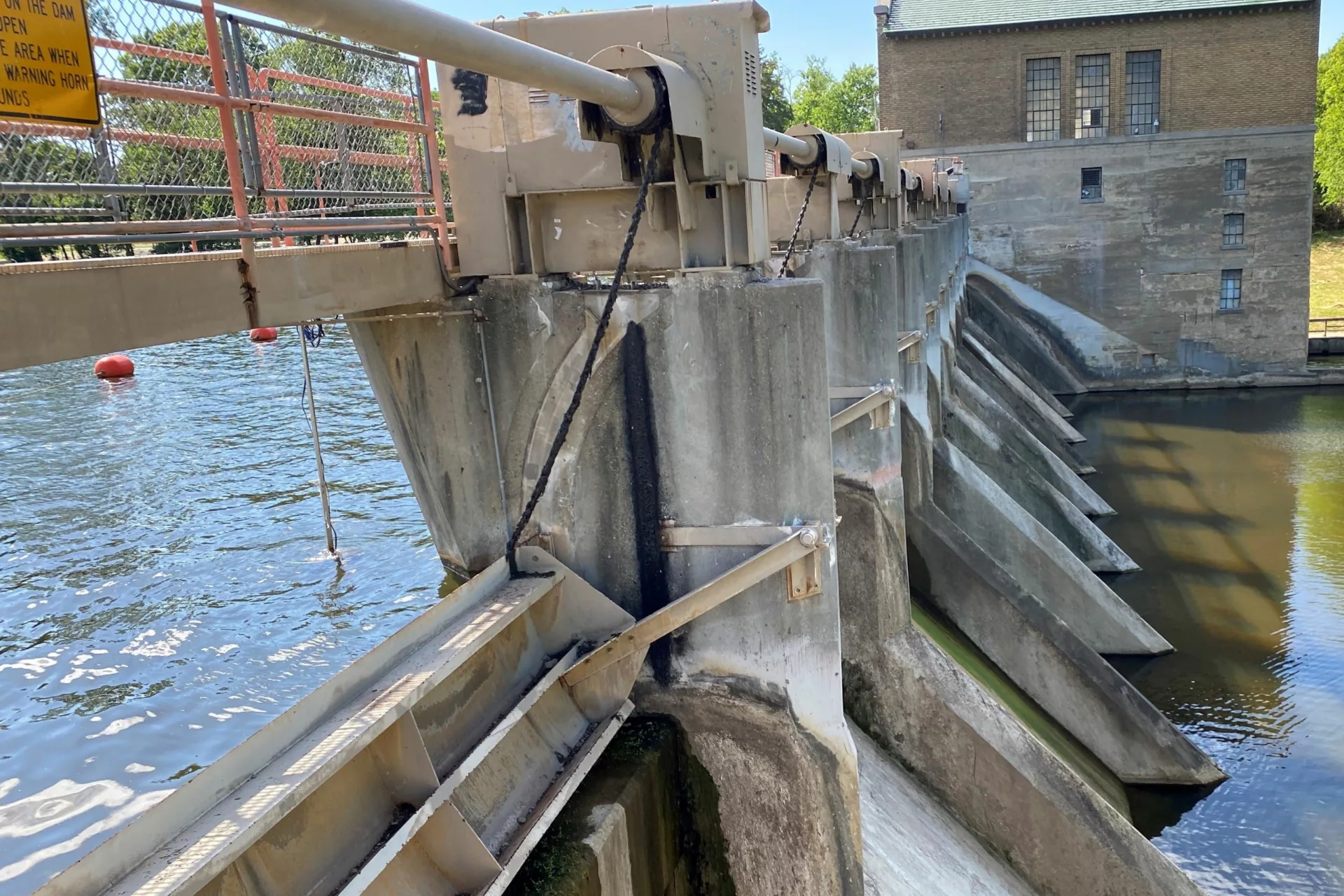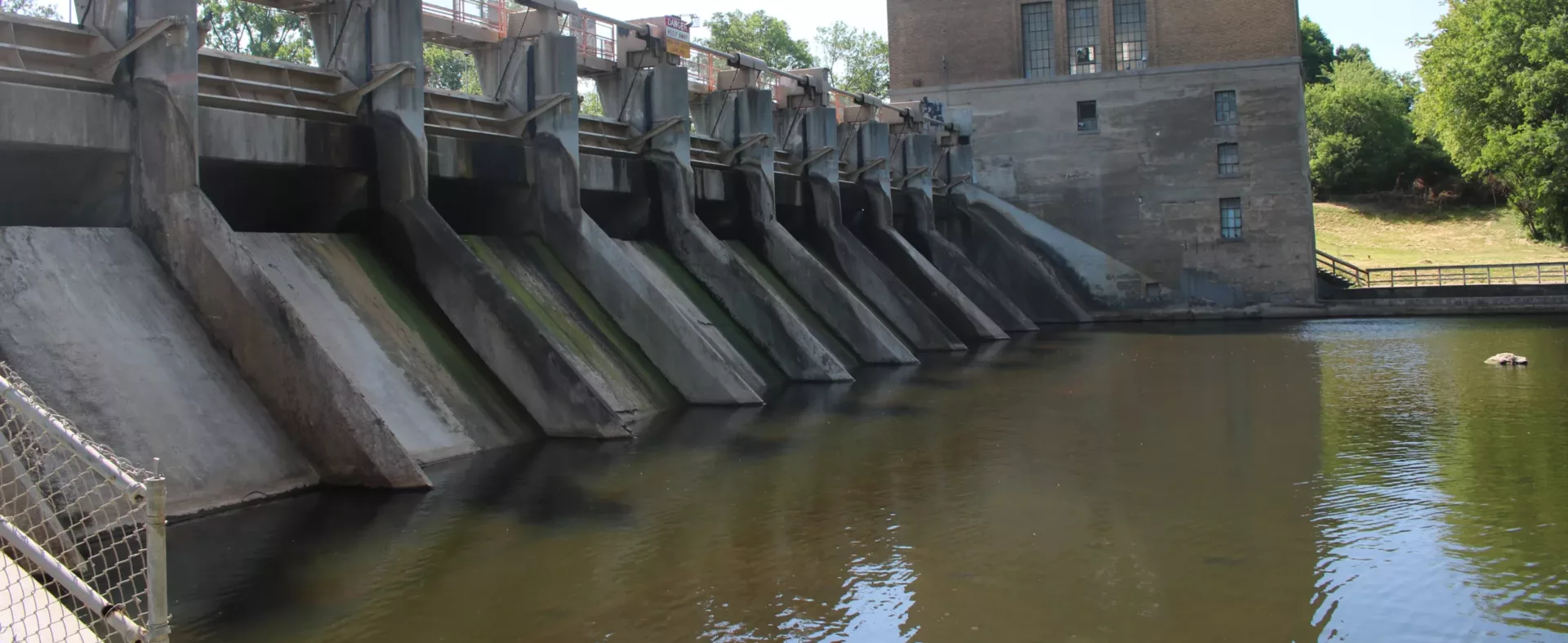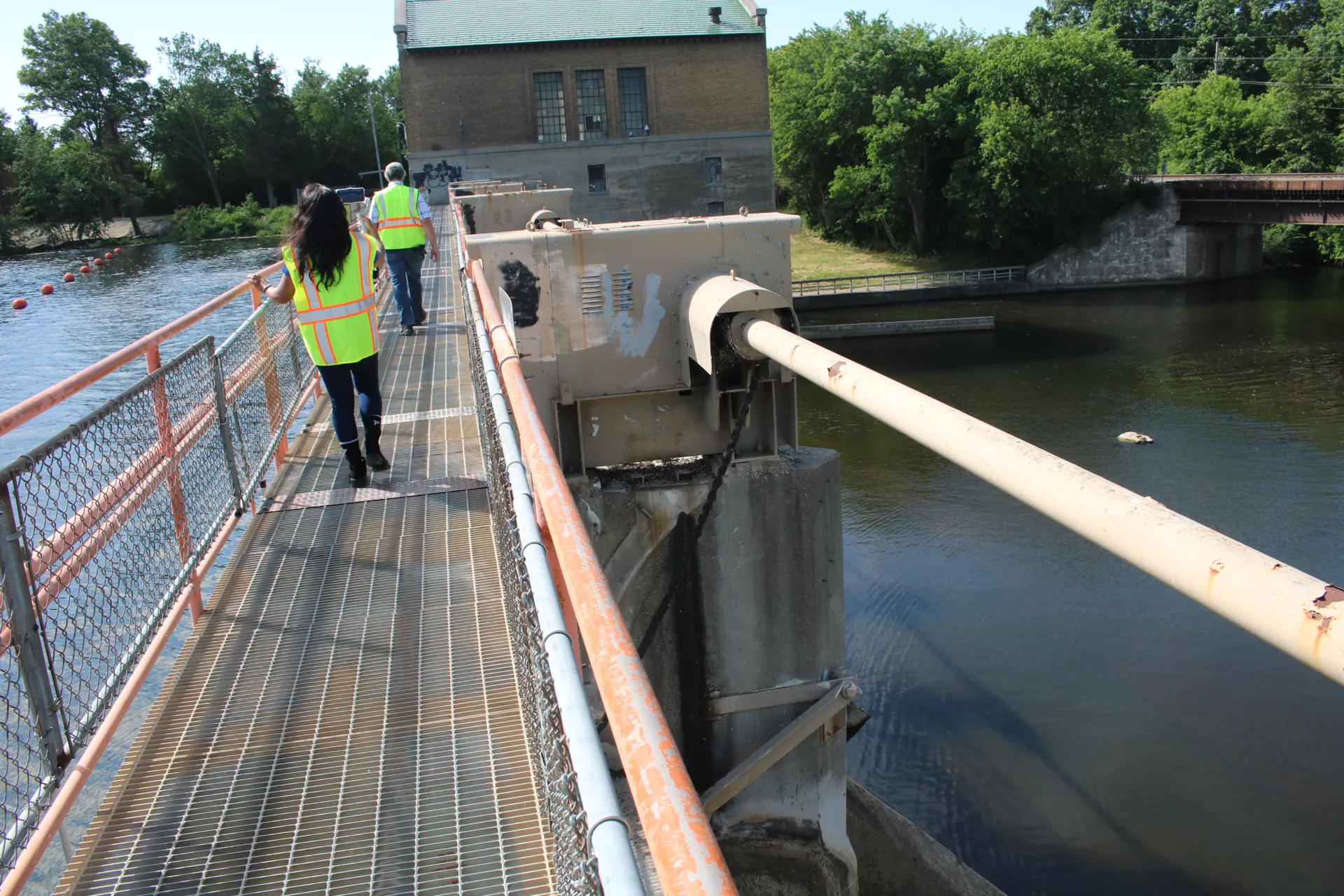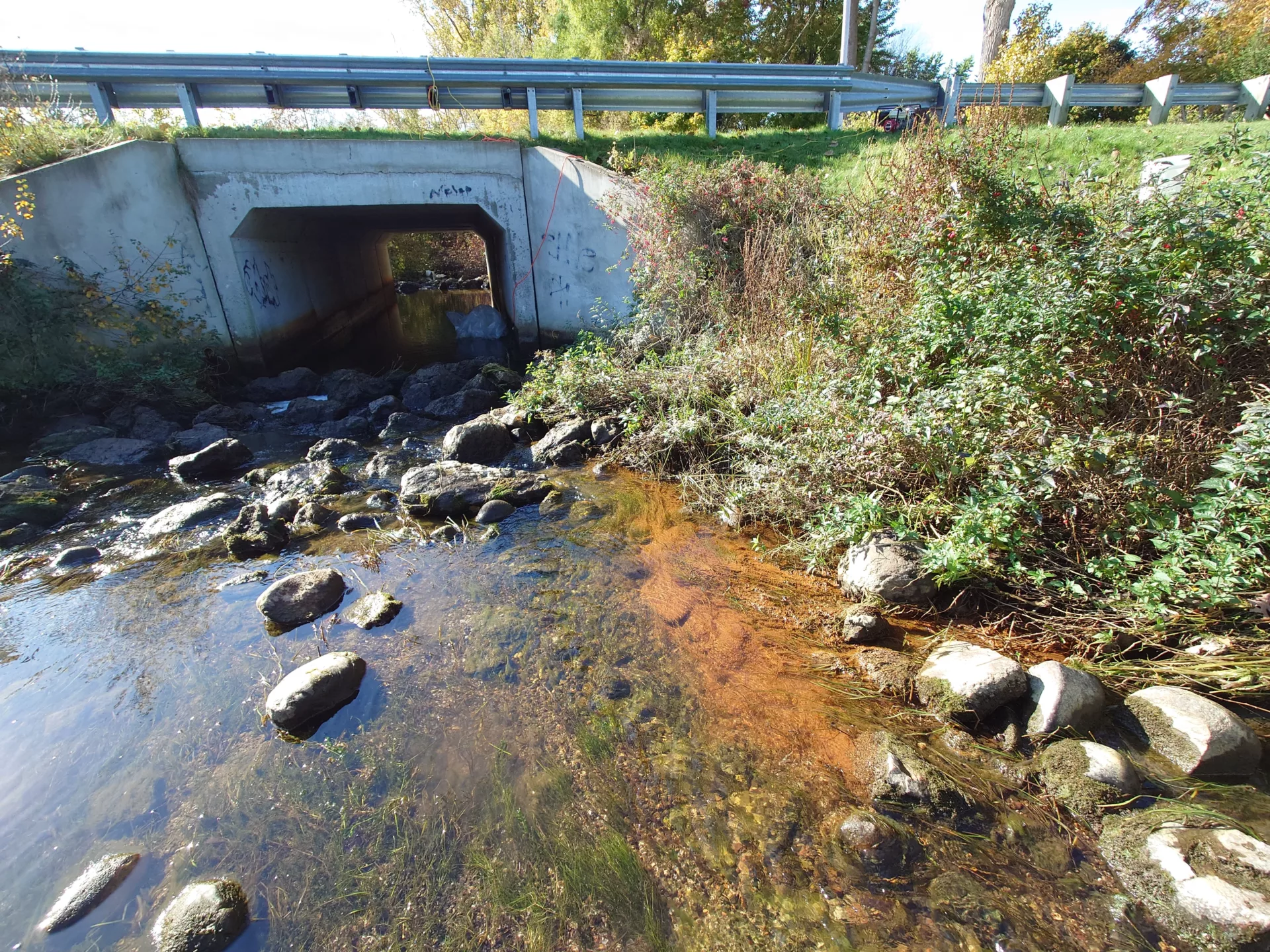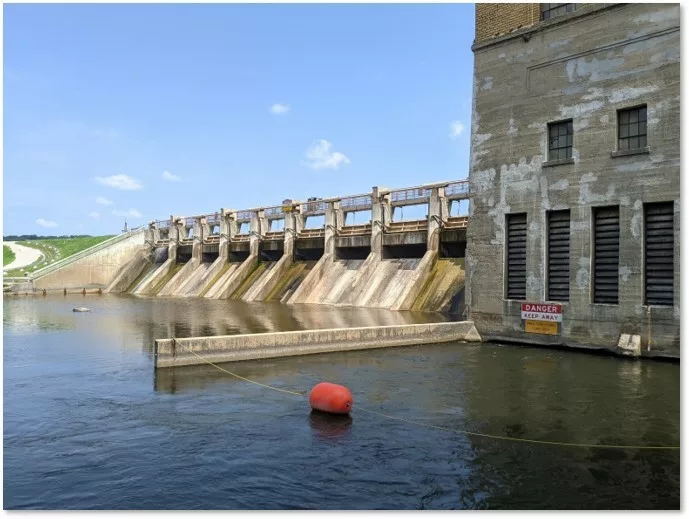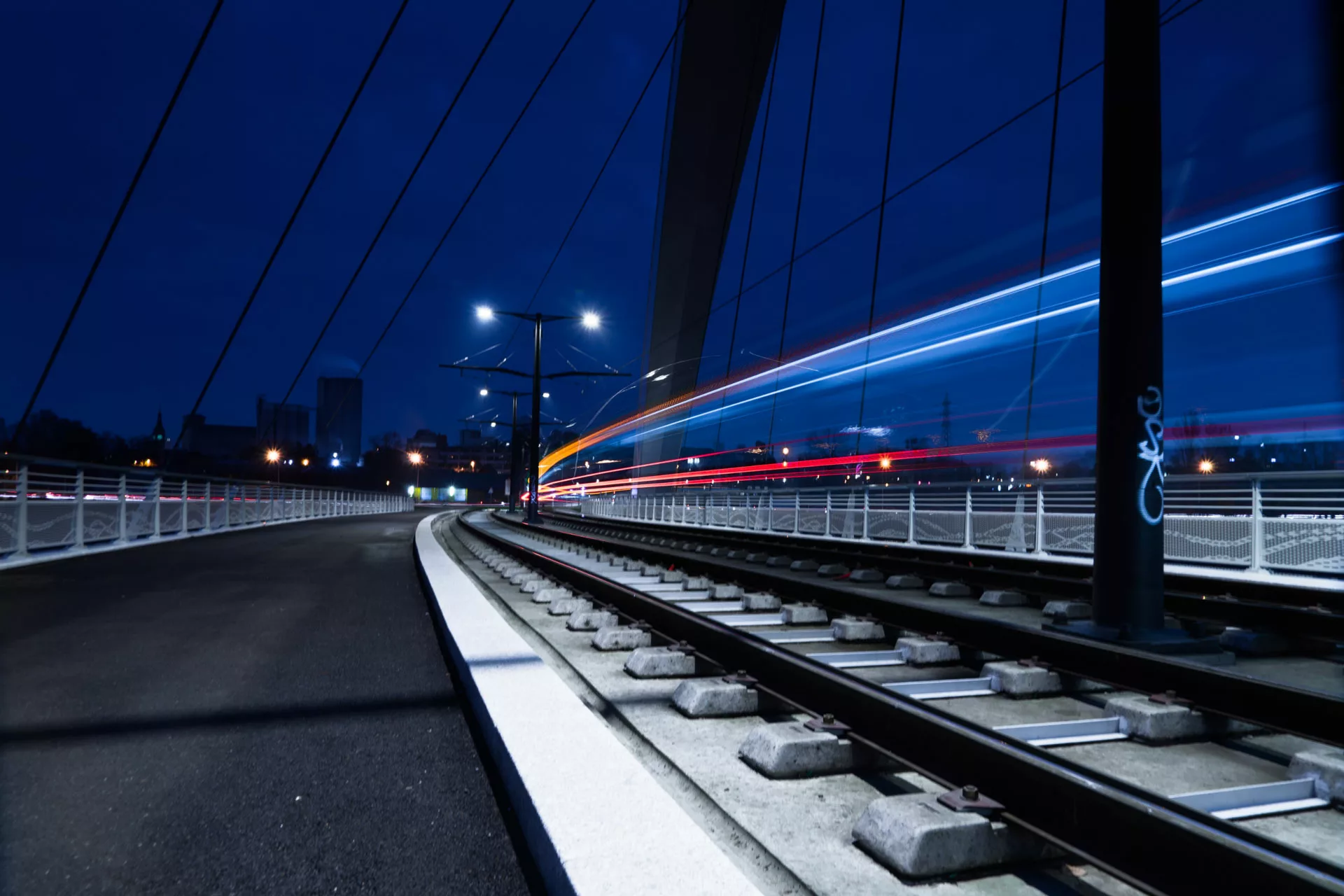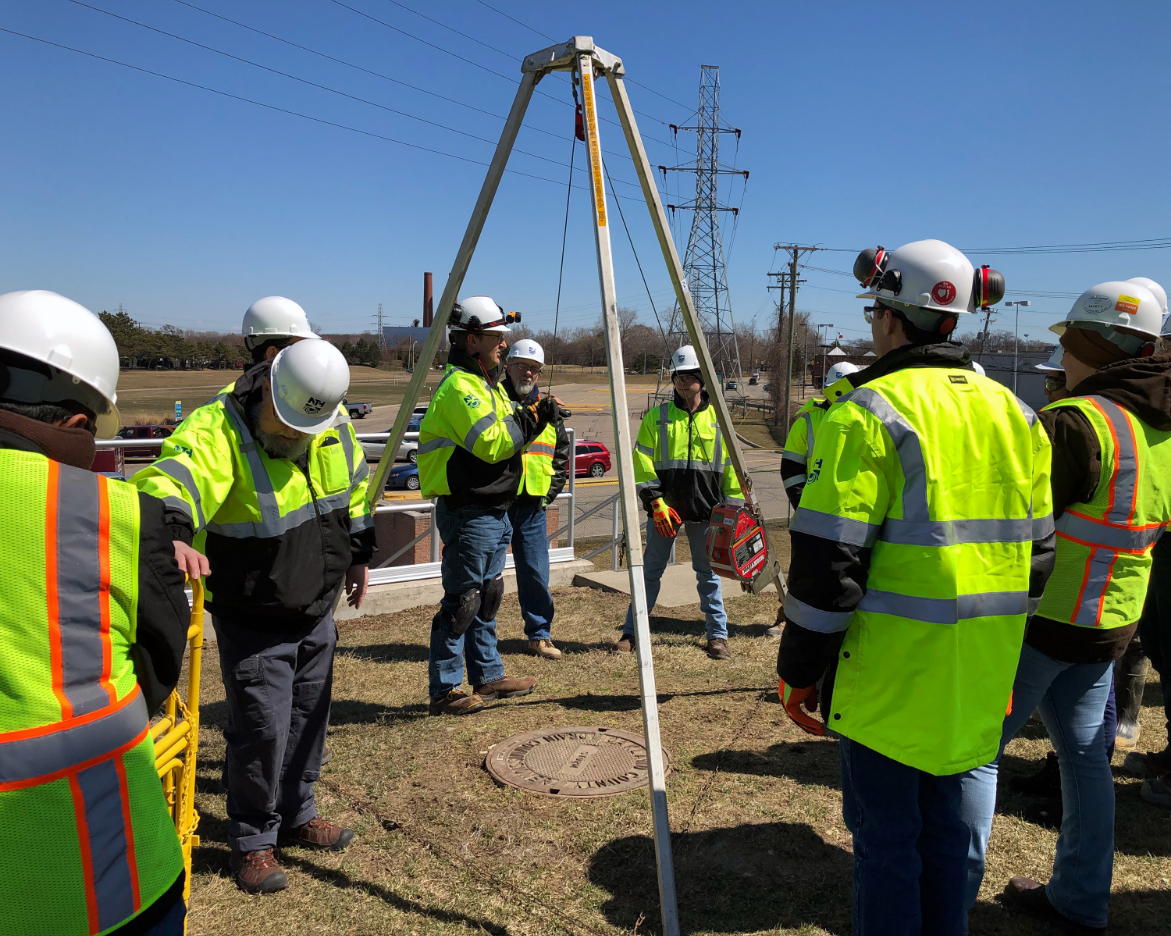Project Overview
Using a competitive selection process, the City of Ann Arbor chose NTH to provide exploration and analysis services at Barton Dam, a century old dam that consists of a short left embankment, a concrete spillway and powerhouse structure, and a roughly 1500-foot long right embankment that had exhibited signs of seepage for a number of years and was concerning to FERC. Previously, NTH had provided value engineering services through a peer review of another consultant’s analyses and repair recommendations to mitigate observed seepage and piping in a portion of the dam’s right embankment. Based on data, NTH concluded the available information did not provide conclusive results to suggest that construction of a cut-off wall as recommended by the other consultant would be effective.
Our concern was that data on the local groundwater regime did not appear to match the assumed groundwater conditions. Accordingly, the City sought to obtain additional information on the piezometric pressures within, below, and away from the dam and to have updated seepage and stability analyses performed. The City also desired to have subsoil and groundwater conditions explored in the vicinity of one of the right embankment’s toe drains that flows continuously and has historically had much greater discharge than any other toe drain in the embankment.
In addition to the seepage in one area of the downstream toe of the right embankment, a small sinkhole developed in the backfill of the retaining wall. Accordingly, the City amended our contract to include a study of the sinkhole to ascertain its cause(s) and the pathway(s) by which soil loss occurred that allowed for formation of the sinkhole.
Project Scope
The exploration program consisted of drilling ten test borings to depths ranging from about 8 to 70 feet below ground surface along with installation of vibrating wire piezometers (VWPs) in nine of the boreholes. NTH offered VWPs as an alternative due to their quicker response to changes in piezometric pressures and their ability to obtain readings at a specific elevation rather than averaged over the length of well screen (usually several feet) used for standpipe piezometers. Further, because VWPs are grouted in the boreholes and only have a signal cable that reaches the ground surface, they avoid having an open flow path to the ground surface and do not discharge groundwater when installed in locations with flowing artesian conditions.
The analysis program included numeric simulation of the groundwater flow regime using data collected to understand the source(s) of water that feed the various seeps. The results of the groundwater flow analysis allowed for improved slope stability analyses to be performed as well as evaluation of the viability of various approaches to mitigate the observed seepage. To subsoil explore conditions at and in the vicinity for the sinkhole, NTH used dynamic cone penetrometer (DCP) testing as a less invasive alternative to drilling test borings. We also introduced fluorescent dye into the subsurface at the sinkhole location and making observations through weep holes in the retaining wall using a borescope as non-destructive means to explore possible paths of soil loss.
Following completion of the study and updating of the stability and seepage models, it was clear that remedial improvements to the right embankment were required to alleviate the ongoing seepage issues. After the release of the investigation report, NTH evaluated potential stabilization options. The two final options consisted of constructing a stabilization buttress over much of the downstream slope of the right embankment or constructing a cutoff wall along the crest of the right embankment. Based on logistic challenges in mobilizing equipment to the site as well as concerns associated with drilling or driving efforts to install a cutoff wall, NTH recommended that the City construct a stabilizing berm to alleviate the seepage and stability issues associated with the right embankment. The recommended option was subsequently discussed in detail with FERC who agreed that the stabilization berm was the preferred option.
Upon approval of the remedial concept, NTH commenced to prepare plans and specifications to implement the remedial plan. Due to site access limitations, in addition to developing design documents for the berm construction, the design team also incorporated improvements to site access beneath the existing railroad alignment. This included removal of the existing gabion retaining wall, construction of a new modular block retaining wall to widen the access path beneath the railroad. Other site improvements will include a new stairway system to access the dam crest.
Following development of the 90% drawing submission, NTH participated in a Probable Failure Mode Analysis session with the City and FERC. During the session, FERC and the design team identified critical aspects of the construction that the contractor and field engineering staff are required to perform to successfully complete the project. The most important aspect of the construction was the required use of positive dewatering for the all elements of the project requiring excavation as well as requiring the contractor to limit excavation on any single day such that before the work day was completed, all excavations must be backfilled to their original grade.
In 2022, the City again selected NTH to develop contract documents for the preferred long-term solution of constructing a stabilization berm on most of the downstream face of the dam. In addition to engineering plans and specifications for the berm, other project elements included widening of the existing pathway under the railroad underpass at the site, filling of the existing toe ditch pond, removal of a reverse filter at the site that had failed and upgrading of the existing access stairs from the dam toe to the crest. The stabilization berm design was completed in 2024 and following a second PFMA with FERC, the stabilization berm was advertised for bidding in 2024. Current plans are for construction of the dam’s remedial solution to begin in later 2024 or early 2025 with a 12 to 18 month construction duration planned.
Client Benefit
NTH’s extensive knowledge of the site conditions has allowed us to be a trusted advisor to the City of Ann Arbor to over several decades.
